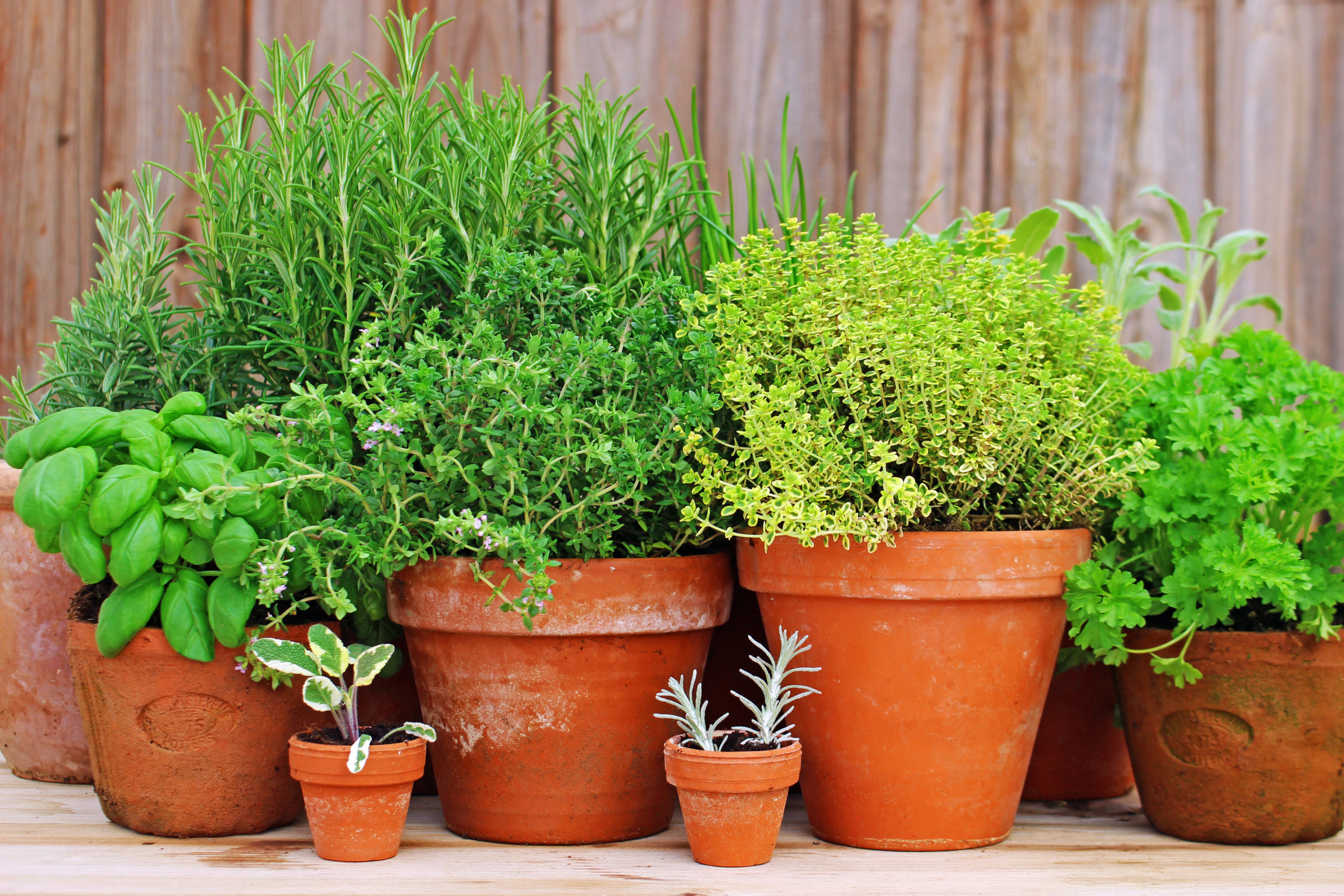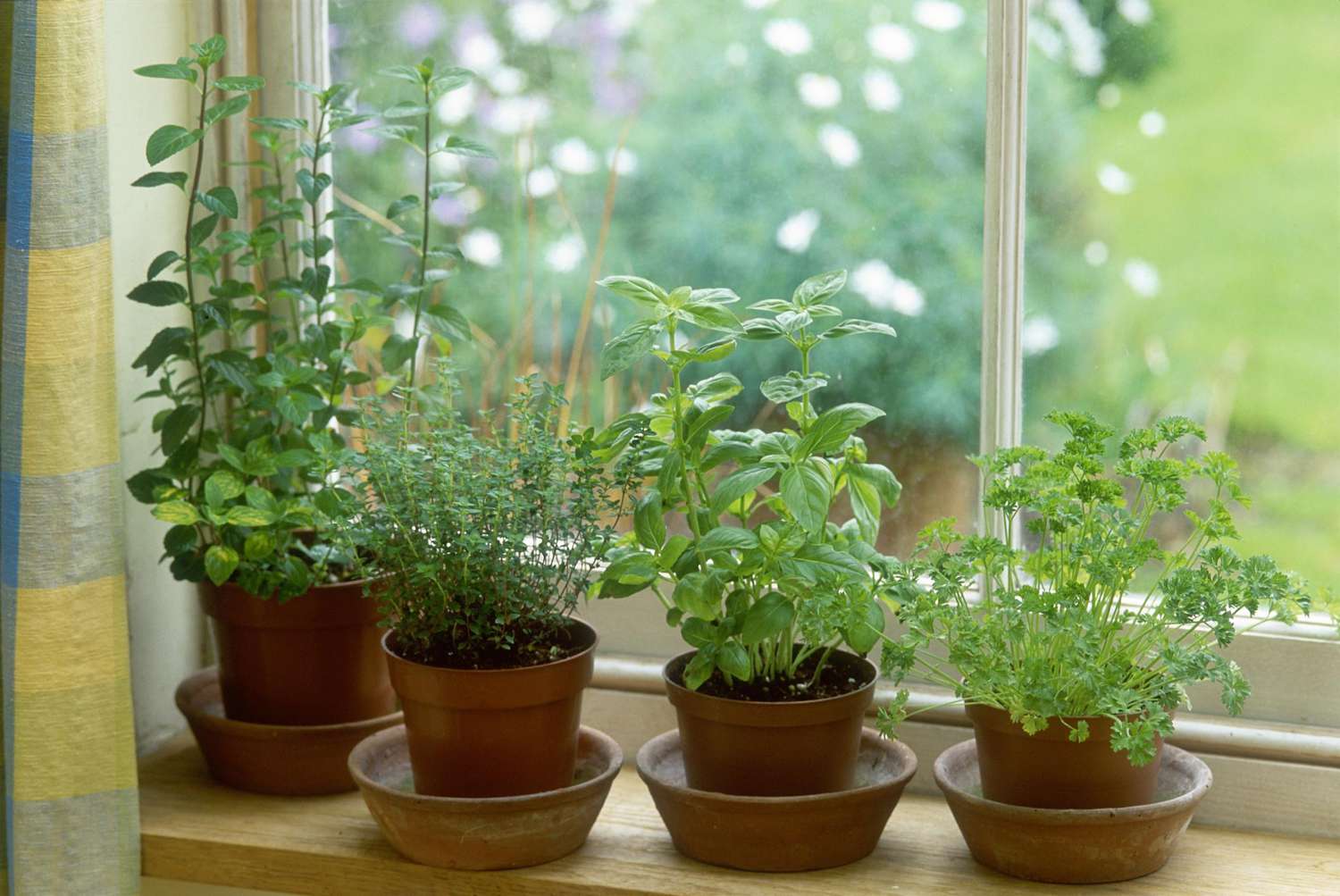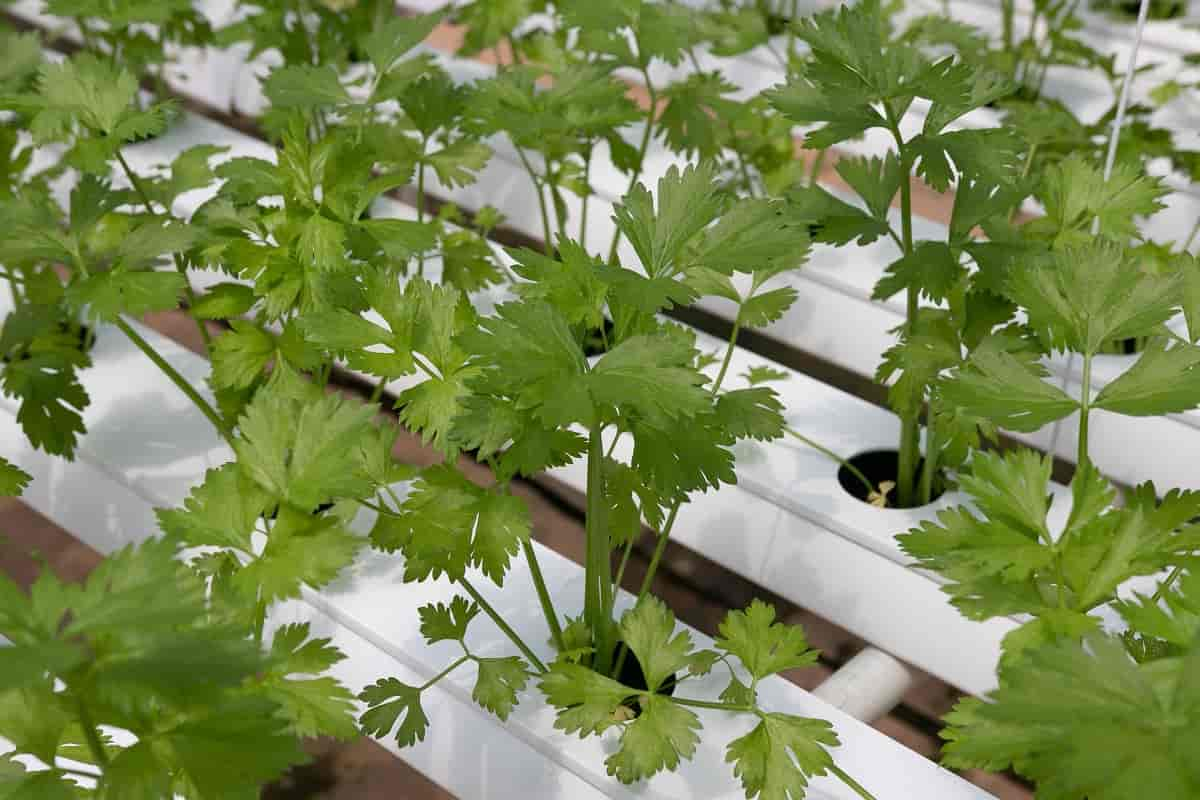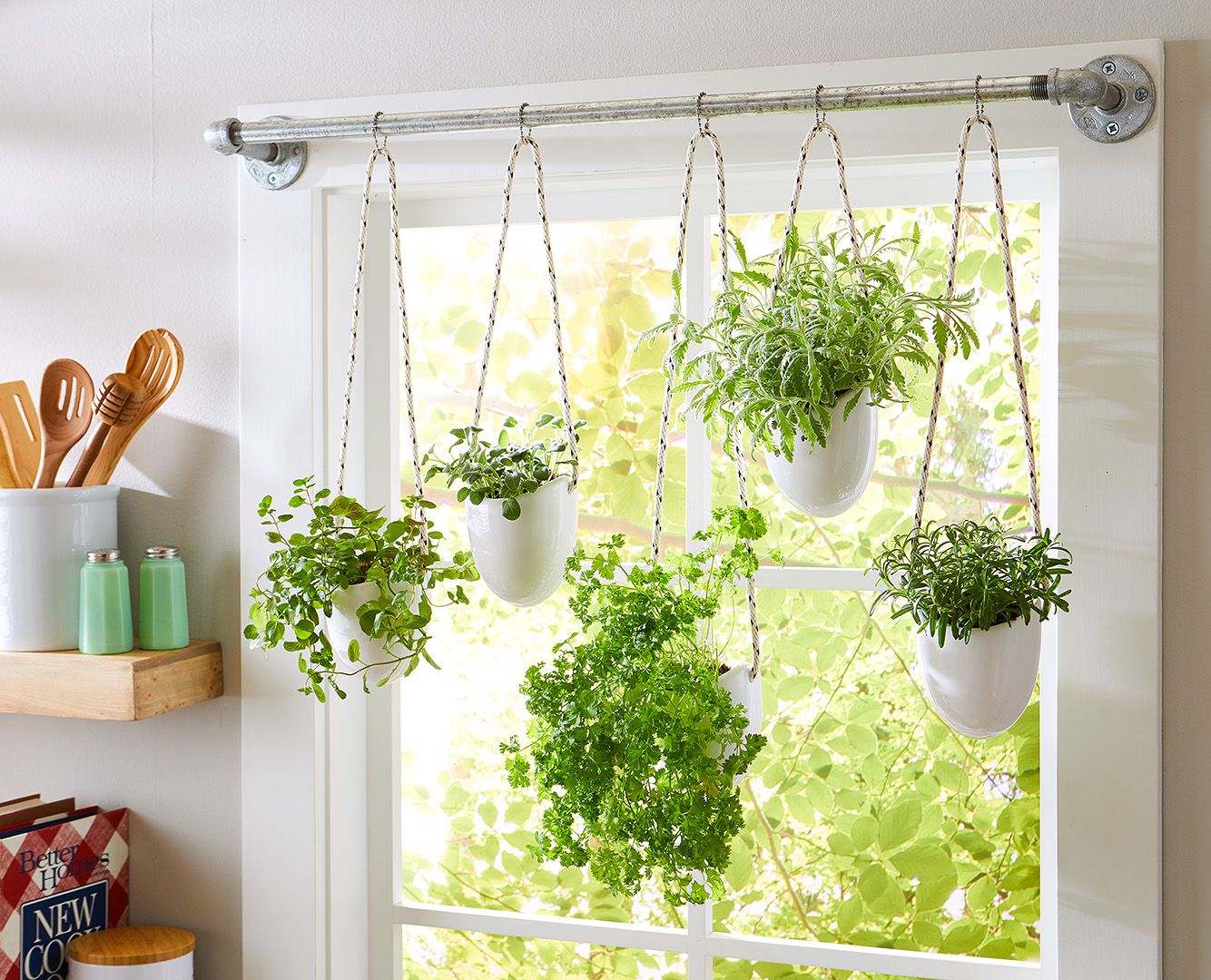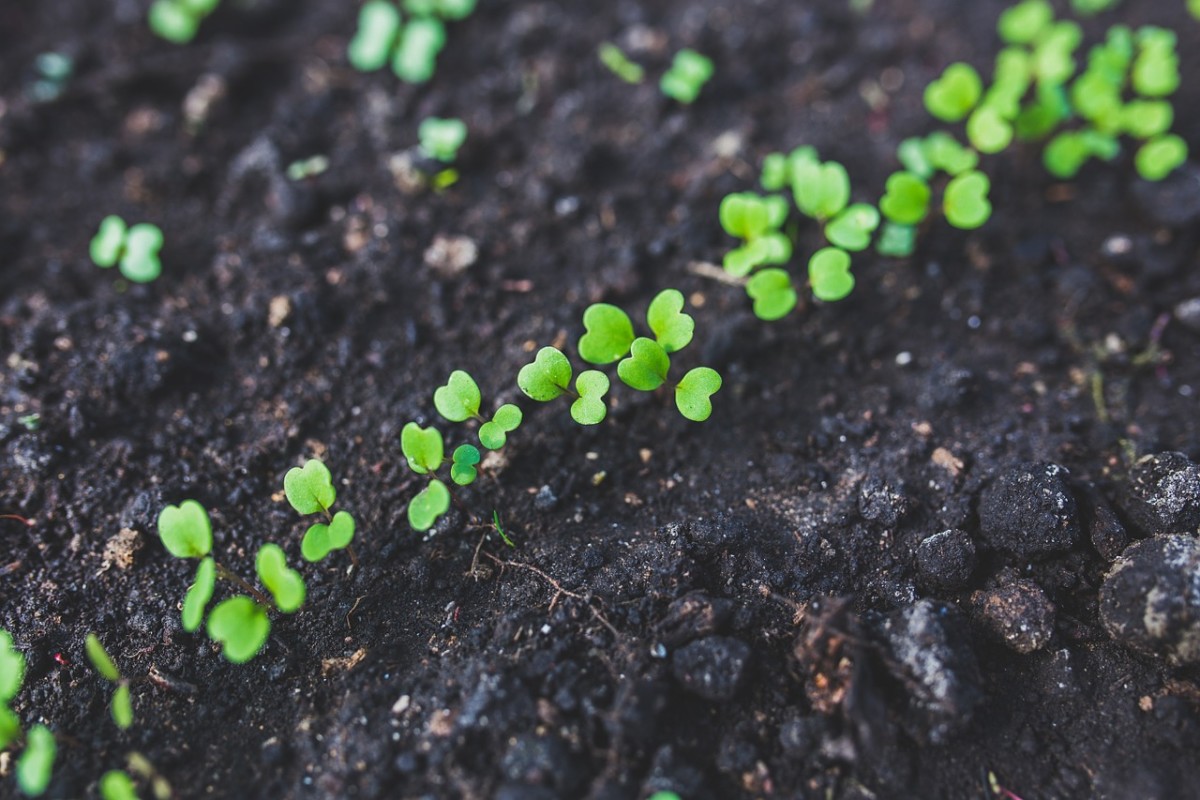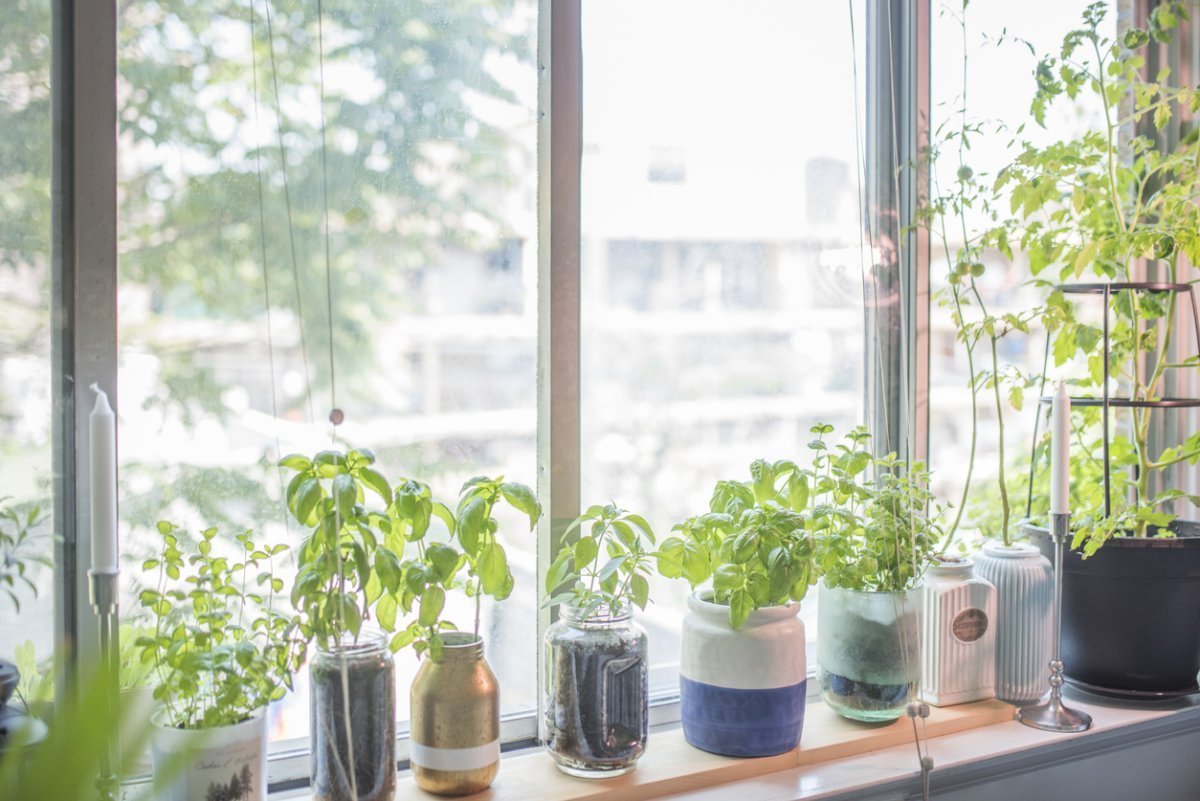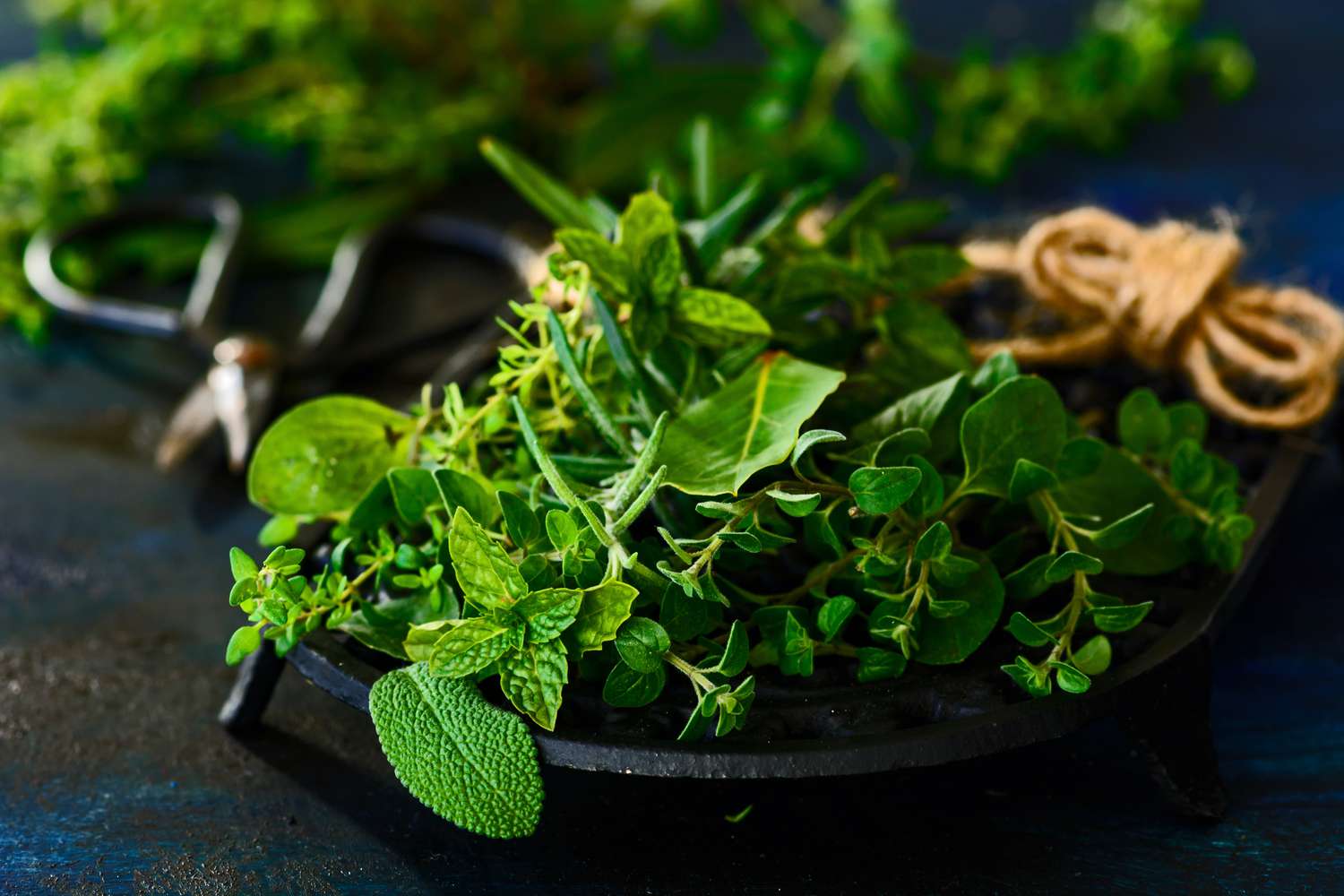Home>Types of Gardening>Edible Gardening>What Herbs To Grow
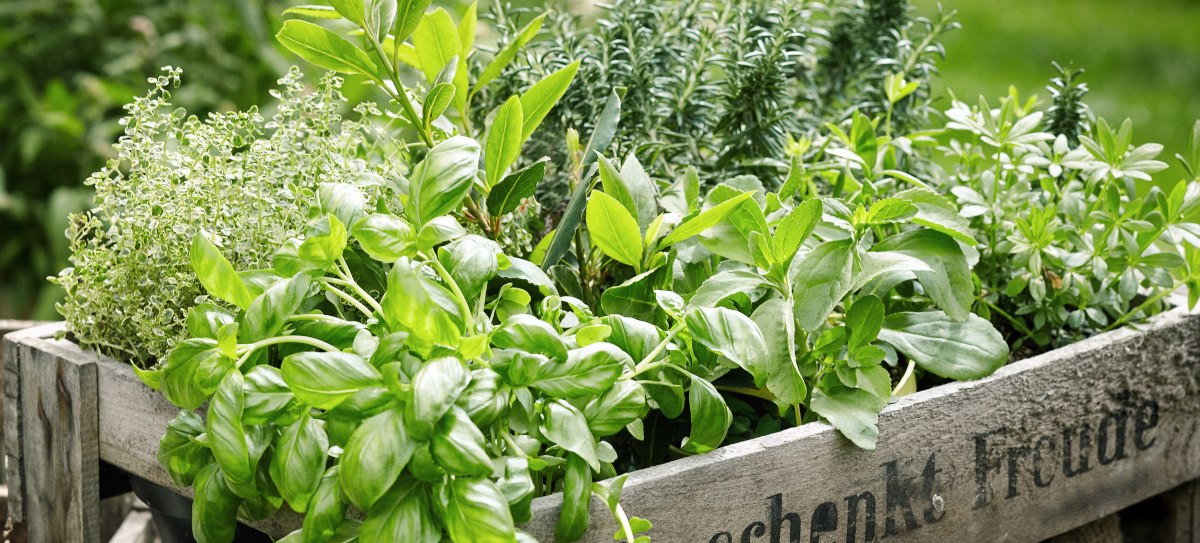

Edible Gardening
What Herbs To Grow
Modified: January 22, 2024
Discover the best herbs to grow in your edible garden. From basil to thyme, learn how to cultivate flavorful herbs for all your culinary creations.
(Many of the links in this article redirect to a specific reviewed product. Your purchase of these products through affiliate links helps to generate commission for Chicagolandgardening.com, at no extra cost. Learn more)
Introduction
Welcome to the world of edible gardening, where you can transform your backyard into a thriving oasis of fresh herbs. Whether you’re a seasoned green thumb or just starting out, growing your own herbs can be a rewarding and delicious endeavor. Not only do herbs add flavor and aroma to your meals, they also boast a plethora of health benefits and can be used in a variety of culinary and medicinal applications. Plus, there’s nothing quite like the satisfaction of harvesting your own herbs and enjoying their vibrant flavors in your favorite recipes.
In this article, we will explore some of the most popular herbs to grow in your edible garden. These herbs are known for their versatility, adaptability, and ease of cultivation, making them ideal choices for both beginners and experienced gardeners alike. So, let’s dive in and discover the wonders of growing your own herb garden!
Before we delve into the specific herbs, it’s important to note that herbs can be grown in various ways – in containers, raised beds, or directly in the ground. Consider the space you have available and the specific requirements of each herb when choosing the best growing method for your garden. With a bit of planning and care, you’ll soon be reaping the rewards of a flourishing edible garden right at your fingertips.
Basil
When it comes to edible gardening, basil is a classic herb that is loved by both home cooks and professional chefs. This aromatic herb is easy to grow and adds a delightful flavor to a wide range of dishes, from pasta sauces to salads.
Basil thrives in warm climates and requires plenty of sunlight, making it an excellent choice for outdoor gardens. However, it can also be grown successfully indoors near a sunny window. This versatile herb comes in various types, including sweet basil, which is commonly used in Italian cuisine, and Thai basil, which lends a unique flavor to Asian dishes.
To cultivate basil, start by sowing the seeds in well-drained soil after the last frost. Keep the soil consistently moist and provide adequate airflow to prevent fungal diseases. You can harvest the young leaves as soon as the plant reaches a height of 6-8 inches, ensuring a continuous supply throughout the growing season.
Not only is basil a culinary delight, but it also offers several health benefits. It is rich in antioxidants and essential oils that have anti-inflammatory and antimicrobial properties. Additionally, basil is a good source of vitamins A, K, and C, as well as minerals like calcium and iron.
For an extra burst of flavor, try infusing basil into oils, vinegars, or even cocktails. You can also dry or freeze the leaves for future use. Whether you’re adding it to a Caprese salad or using it as a garnish on top of pizza, basil is a must-have herb in any edible garden.
Rosemary
Rosemary is a hardy and aromatic herb that brings a touch of Mediterranean flavor to your edible garden. Its distinctive scent and robust flavor make it a popular choice for adding depth to various dishes, from roasted meats to soups and stews.
This perennial herb thrives in sunny and well-drained soil, making it perfect for outdoor gardens. It can also be grown in containers, making it a viable option for those with limited space. Rosemary requires regular watering, allowing the soil to dry out slightly between each watering to prevent root rot.
With its needle-like leaves and woody stems, rosemary is a visually appealing addition to any garden. The leaves can be harvested year-round, but the flavors are often most potent in the spring and summer months. Simply snip off a sprig or two and add it to your dishes to impart a delightful aroma and flavor.
Apart from its culinary uses, rosemary is also known for its medicinal properties. It contains compounds that have antioxidant and anti-inflammatory effects, making it beneficial for digestion, memory, and cardiovascular health.
One popular way to enjoy rosemary is by infusing it into olive oil. Simply combine fresh rosemary sprigs with olive oil and let it sit for a week to infuse the flavors. This can then be used as a delicious drizzle over bread, salads, or roasted vegetables.
Additionally, rosemary can be used as a natural air freshener or even incorporated into homemade beauty products. The essential oils derived from rosemary have been used for centuries for their calming and soothing properties.
Whether you’re adding a sprig of rosemary to elevate the flavor of your roasted potatoes or using it as a fragrant decoration in your garden, this versatile herb is a must-have for every edible garden.
Thyme
Thyme is a versatile herb that adds a distinct and savory flavor to countless dishes. With its delicate leaves and subtle aroma, it is a popular choice for Mediterranean cuisine, as well as a variety of other culinary delights.
Thyme is relatively easy to grow and can thrive in both outdoor gardens and indoor containers. It prefers well-drained soil and plenty of sunlight, making it a great option for sunny spots in your garden. The small, perennial leaves of thyme can be harvested throughout the growing season, ensuring a fresh supply of aromatic flavor.
One of the many reasons thyme is beloved in the culinary world is its ability to enhance a wide range of dishes. From roasted meats and vegetables to marinades and sauces, thyme adds a punch of flavor that elevates the taste of your creations. It pairs well with other herbs such as rosemary and sage, creating a delicious blend of aromas.
Aside from its culinary uses, thyme has also been used for centuries in traditional medicine. It contains essential oils and compounds that have antimicrobial and antioxidant properties. Thyme tea is commonly used as a natural remedy for coughs and sore throats.
If you have a surplus of thyme leaves, consider preserving them for later use. Thyme can be dried by hanging small bundles upside down in a cool, well-ventilated area. Once dry, the leaves can be stored in airtight containers and used in various dishes throughout the year.
In addition to its culinary and medicinal benefits, thyme is also known for attracting beneficial insects to your garden, such as bees and butterflies. These pollinators play a crucial role in the overall health and productivity of your garden.
With its versatility, ease of cultivation, and delightful flavor, thyme is an essential herb to include in your edible garden. So, whether you’re seasoning a hearty stew or creating a fragrant herb-infused oil, thyme is sure to enhance the taste of your dishes and bring a touch of natural beauty to your garden.
Parsley
Parsley is a vibrant and versatile herb that is commonly used as both a garnish and a flavor enhancer in a variety of dishes. Its fresh and slightly peppery taste adds a burst of freshness to salads, soups, and sauces.
There are two main types of parsley: curly-leaf parsley and flat-leaf parsley. Both varieties are easy to cultivate, making them a great choice for beginner gardeners. Parsley grows best in fertile and well-drained soil, and it thrives in cool and partially shaded areas.
One of the unique features of parsley is its high nutritional value. It is rich in vitamins A, C, and K, as well as minerals like iron and potassium. Adding parsley to your meals not only enhances the flavor but also provides a nutritional boost.
Harvesting parsley is a breeze, as the leaves can be snipped off as needed. Make sure to trim the outer stems first, allowing the inner leaves to continue growing. If you find yourself with an abundant harvest, you can dry the leaves or freeze them in ice cube trays with a bit of water for convenient future use.
In addition to its culinary uses, parsley has also been used in traditional medicine for its potential health benefits. It has been attributed with antioxidant and anti-inflammatory properties, as well as supporting kidney health and aiding digestion.
Another interesting fact about parsley is that it can help repel certain insects in your garden. Planting parsley near roses or tomatoes can help protect them from pests like aphids and beetles. Plus, its attractive foliage adds a pop of green to your garden, contributing to its aesthetic appeal.
Whether you’re adding a sprig of parsley as a final touch to your dishes or incorporating it into pesto or tabbouleh, this versatile herb is a must-have for any edible garden. Its bright flavor and nutritional value make it a wonderful addition to your culinary creations.
Mint
Mint is a refreshing and aromatic herb that is beloved for its cooling properties. Known for its distinct flavor and versatility, mint is a popular addition to teas, cocktails, desserts, and savory dishes alike.
There are many varieties of mint, including spearmint, peppermint, and chocolate mint, each with its own unique flavor profile. Mint is incredibly easy to grow, making it a great choice for even the least experienced gardener. It thrives in moist soil and partial shade, but it can tolerate full sun if provided with enough moisture.
Mint spreads rapidly, so it is best to plant it in containers or dedicated areas of your garden to prevent it from taking over. Regular pruning will help keep the plant in check and promote healthy growth.
In addition to its culinary uses, mint has a long history of medicinal use. It is known to aid digestion, soothe upset stomachs, and alleviate headaches. Mint leaves can also be applied topically to soothe itching and inflammation.
For culinary purposes, fresh mint leaves are commonly used to infuse flavor into beverages like mojitos or to add a refreshing twist to salads and sauces. It can also be dried or frozen to preserve its aromatic flavor for later use.
Mint is a great companion plant in the garden, as its strong aroma helps repel pests such as ants, flies, and mosquitoes. Planting mint near other susceptible plants can help deter unwanted insects and pests.
When it comes to mint, the possibilities are endless. From indulging in a cup of mint tea to incorporating it into homemade mint chocolate chip ice cream, this versatile herb will bring a burst of freshness and flavor to your culinary creations.
Sage
Sage is a versatile and aromatic herb that enriches both sweet and savory dishes with its distinct flavor. Known for its earthy and slightly peppery taste, sage is a staple in Mediterranean cuisine, particularly in stuffing and meat dishes.
Sage is a perennial herb that is relatively easy to grow. It thrives in well-drained soil and requires full sun or partial shade. With proper care, sage plants can last for several years, producing an abundant harvest.
The leaves of the sage plant are the primary culinary component. They can be harvested at any time but are typically picked just before or during flowering for the best flavor. Fresh sage leaves can be used immediately or dried for future use. Drying the leaves intensifies their flavor.
In addition to its culinary uses, sage has a long history of medicinal and therapeutic properties. It contains natural compounds that have antioxidant, anti-inflammatory, and antimicrobial effects. Sage tea is often used for its potential health benefits, such as soothing sore throats and aiding digestion.
Sage is also known for its aromatic properties. The scent of sage is said to have a calming effect on the mind, making it a popular choice for aromatherapy and home fragrance. Dried sage leaves can be bundled and burned as a natural incense or used in homemade potpourri.
When growing sage, it’s important to note that it can become quite large. Pruning regularly will help maintain its shape and promote bushier growth. Avoid overwatering, as sage prefers drier soil conditions.
Whether you’re using sage to elevate the flavors of roasted vegetables, infusing it into oils or vinegars, or harnessing its natural aromatherapy benefits, this versatile herb is a valuable addition to any edible garden. Its unique flavor and multifaceted uses make sage a must-have for culinary and wellness enthusiasts alike.
Oregano
Oregano is a fragrant and flavorful herb that brings the taste of the Mediterranean to your edible garden. Known for its robust and slightly bitter taste, oregano is a staple in various Italian, Greek, and Mediterranean dishes.
Oregano is relatively easy to grow and thrives in well-drained soil and full sun. It is a perennial herb, meaning it will come back year after year, providing you with a continuous supply of fresh leaves. Oregano can also be grown in containers, making it suitable for small spaces and indoor gardens.
The leaves of the oregano plant are the main culinary attraction. They can be harvested as soon as the plant reaches a height of 4-6 inches, and the leaves can then be used fresh, dried, or frozen for future use. Oregano leaves are known for their strong flavor, making them a perfect addition to tomato-based sauces, pizzas, soups, and marinades.
In addition to its culinary uses, oregano has been used for its potential medicinal properties for centuries. It contains compounds with antimicrobial and antioxidant properties, which may help support immune health and fight against harmful bacteria.
One popular method of using oregano medicinally is in the form of oregano oil. Oregano oil is believed to have antiviral, antifungal, and anti-inflammatory properties. It can be used topically or ingested in small amounts for its potential health benefits.
Oregano is also a great companion plant in the garden. The strong scent of oregano helps repel pests such as aphids, moths, and maggots. By planting oregano near susceptible plants, you can naturally deter these unwanted visitors and protect your garden.
Whether you’re sprinkling fresh oregano leaves over your homemade pizza or infusing its flavors into oils and vinegars, this versatile herb will add a delightful touch to your culinary creations. With its vibrant taste and potential health benefits, oregano is a must-have herb for every edible garden.
Cilantro
Cilantro, also known as coriander leaves, is a vibrant and aromatic herb that is widely used in various cuisines around the world. Its unique flavor profile, which is a combination of citrusy and herbal notes, adds a fresh and vibrant touch to dishes.
Growing cilantro is relatively easy, and it can be grown from either seeds or transplants. Cilantro thrives in cool weather and prefers well-drained soil and full sun but can tolerate partial shade. It is a fast-growing herb, and regular harvesting is essential to encourage continuous growth.
The leaves of the cilantro plant are the primary edible part. They can be harvested once the plant reaches a height of 6-8 inches. Cilantro leaves are commonly used as a garnish in various dishes, adding a burst of freshness and enhancing the flavors. The stems and roots of cilantro are also edible and can be used to infuse flavor into soups and sauces.
Cilantro is a versatile herb that is popular in many cuisines, including Mexican, Indian, Thai, and Middle Eastern. It pairs well with ingredients like lime, chili, garlic, and cumin, creating complex and vibrant flavor combinations.
In addition to its culinary uses, cilantro is also known for its potential health benefits. It is rich in vitamins A and K, as well as antioxidants. Cilantro has been traditionally used as a digestive aid and may help with detoxification.
It’s important to note that cilantro has a distinct taste that can be polarizing for some individuals. Some people find cilantro to have a soapy or pungent flavor due to certain compounds present in the herb. However, many people enjoy its unique flavor and find it to be a refreshing addition to their dishes.
Whether you’re adding a sprinkle of chopped cilantro leaves to your tacos, blending it into a zesty salsa, or using it to garnish your curries, cilantro is an essential herb in many flavorful cuisines around the world. Experiment with this versatile herb to discover its incredible taste and aroma.
Dill
Dill is a delicate and aromatic herb that adds a delightful flavor to a wide range of dishes. With its feathery green leaves and distinct taste, dill is a popular choice in cuisines worldwide, particularly in pickles, seafood, soups, and salads.
Dill is relatively easy to grow, making it suitable for both outdoor gardens and containers. It prefers well-drained soil and full sun but can tolerate partial shade. Dill is an annual herb, which means it completes its life cycle in one growing season. However, it easily self-seeds, allowing it to come back year after year.
The feathery leaves of dill can be harvested once the plant reaches a height of 6-8 inches. The leaves are traditionally used fresh, but they can also be dried or frozen for later use. Dill seeds are also edible and have a slightly different flavor profile, with a stronger and more pungent taste.
Dill is known for its distinctive flavor, which is often described as a combination of anise and celery with a hint of citrus. It pairs well with a variety of ingredients, including fish, potatoes, yogurts, and cucumbers. The delicate flavor of dill can be easily overwhelmed, so it is best to add it towards the end of the cooking process or use it as a garnish.
In addition to its culinary uses, dill has been used for centuries for its medicinal properties. It has been traditionally used to promote digestion, ease stomach discomfort, and freshen breath. Dill also contains certain compounds that may have antimicrobial properties.
Dill is known to attract beneficial insects to the garden, such as honeybees and hoverflies, which help with pollination and pest control. It can also deter pests like aphids and spider mites from nearby plants, making it a valuable companion plant in the garden.
Whether you’re sprinkling fresh dill on top of your smoked salmon, incorporating it into your homemade tzatziki sauce, or adding it to your homemade pickles, dill adds a unique and delightful flavor to your dishes. Experiment with this versatile herb to discover its incredible taste and aroma.
Chives
Chives are a versatile and flavorful herb that belongs to the onion family. With their mild and slightly oniony taste, chives add a touch of freshness to various dishes, making them a staple in many culinary creations.
Chives are incredibly easy to grow and are a great addition to any edible garden. They are perennial herbs, meaning they will come back year after year with proper care. Chives thrive in well-drained soil and prefer full sun but can tolerate partial shade.
The slender, hollow leaves of chives are the primary edible part of the plant. They can be snipped as needed, and the leaves will continue to grow throughout the season. Chives are commonly used as a garnish in salads, soups, and baked potatoes, adding a subtle onion flavor and a splash of vibrant green color.
In addition to their culinary uses, chives have certain health benefits. They are rich in vitamins A and K, as well as antioxidants. Chives also contain compounds that may help support healthy digestion and boost the immune system.
Chives are best used fresh, as their delicate flavor can be easily lost during cooking. They can be added at the end of the cooking process to preserve their subtle taste. Chives are also wonderful when added to cream cheese, butter, or sour cream to create flavorful spreads and dips.
Aside from their culinary applications, chives also have ornamental value. Their lovely purple flowers, which bloom in the summer, attract bees and butterflies to your garden, contributing to a vibrant and pollinator-friendly environment.
When growing chives, it’s important to avoid overwatering, as they prefer slightly dry soil. Regular pruning will also help promote healthier and bushier growth. If you find yourself with a surplus of chives, they can be dried or frozen for future use.
Whether you’re snipping fresh chives as a finishing touch to your scrambled eggs, incorporating them into your creamy dips, or using them as a garnish for your homemade soups, chives bring a burst of freshness and flavor to your culinary creations. Add this versatile herb to your edible garden and enjoy its delightful taste and vibrant presence.
Conclusion
Edible gardening is a rewarding and enjoyable experience, and incorporating a variety of herbs into your garden can elevate your culinary creations to new heights. From the classic flavors of basil and rosemary to the distinctive tastes of thyme and mint, each herb brings its own unique aroma and flavor profile to your dishes.
Not only do herbs enhance the taste of your meals, but they also offer a myriad of health benefits. Many herbs are rich in vitamins, minerals, and antioxidants, providing a nutritional boost to your diet. Additionally, certain herbs have been used for centuries in traditional medicine for their potential medicinal properties.
When it comes to growing herbs, it’s important to consider their specific requirements, such as sunlight, soil type, and moisture levels. Whether you have a large outdoor garden or limited space for containers, there are plenty of options to suit your needs. With a little planning and care, you can enjoy a bountiful supply of fresh herbs right at your fingertips.
Remember to experiment with different combinations of herbs in your cooking to discover unique flavor profiles. You can also explore creative ways to preserve herbs, such as drying, freezing, or infusing them into oils and vinegars.
While this article introduced you to some of the most popular herbs to grow, there is a wide world of herbs waiting to be explored. Consider expanding your herb garden to include other herbs like lavender, lemon balm, or marjoram. Each herb offers its own distinct aroma, flavor, and potential health benefits.
So, whether you’re a gardening enthusiast or simply want to enhance your culinary skills, growing your own herbs is a wonderful way to connect with nature and add freshness and flavor to your meals. Explore the world of edible gardening and enjoy the satisfaction of harvesting and using your homegrown herbs to elevate your cooking to a whole new level of deliciousness.
